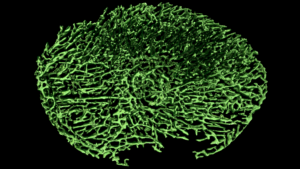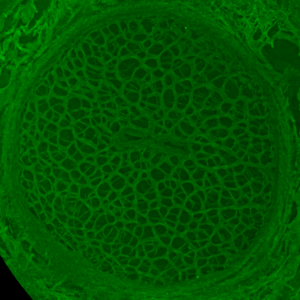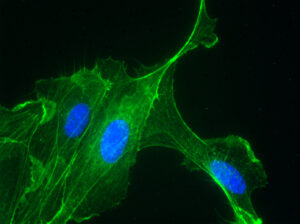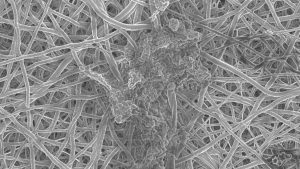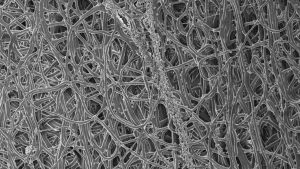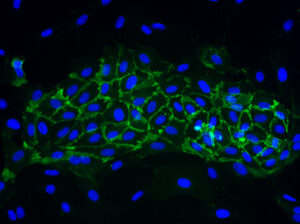Research Areas
Investigating the role of the extracellular matrix in disease and leveraging these insights for translational regenerative medicine.
Introduction
The health and viability of soft tissues are closely governed by the mechanobiology of cells and their surrounding extracellular matrix (ECM). It is also known that the organization and stiffness of the ECM play an integral role in many human diseases. Research efforts within the STBL are therefore focused on identifying the structure function relationships of the ECM and how this plays a role in human disease. In this theme of research, advances in bioengineering are established in the STBL by seamlessly integrating state-of-the-art techniques in intra-vital nonlinear optical microscopy (multiphoton imaging), tissue characterization, cell mechanobiology, and finite element modeling.
Publications
- Location Dependent Coronary Artery Diffusive and Convective Mass Transport Properties of a Lipophilic Drug Surrogate Measured Using Nonlinear Microscopy
- 2-Photon Characterization of Optical Proteolytic Beacons for Imaging Changes in Matrix-Metalloprotease Activity in a Mouse Model of Aneurysm
- A Finite Element Model for Mixed Porohyperelasticity With Transport, Swelling, and Growth
- Racioethnic Differences in the Biomechanical Response of the Lamina Cribrosa
Introduction
The structure function relationships of the ECM as described above are then used by our laboratory to biomanufacture soft tissues for regenerative medicine and tissue engineering purposes. The STBL utilizes several biomanufacturing tools in this endeavor including but not limited to electrospinning, two photon polymerization, spray phase separation, and 3D bioprinting. A tightly integrated experimental and computational optimization approach is utilized to fabricate the next generation of engineered tissues to treat human disease.
Publications
- In-Vivo Assessment of a Tissue Engineered Vascular Graft Computationally Optimized for Target Vessel Compliance
- Optimizing the Porohyperelastic Response of a Layered Compliance Matched Vascular Graft To Promote Luminal Self-Cleaning
- Computationally Optimizing the Compliance of Multilayered Biomimetic Tissue Engineered Vascular Grafts
- Surface Modification of Electrospun Scaffolds for Endothelialization of Tissue-Engineered Vascular Grafts Using Human Cord Blood-Derived Endothelial Cells
Our Team
Our team is a diverse group of scientists and engineers who unite their expertise in mechanobiology, biofabrication, and computational biomechanics to advance the understanding of biological systems.
Open Positions
At the intersection of biology, engineering, and computation, our lab is pioneering research in mechanobiology and advancing innovation.
Postdoctoral Associate
Study how optic nerve head extracellular matrix remodeling is linked to retinal ganglion cell death and vision loss.
Graduate Students
Study the mechanobiology of the extracellular matrix and molecular techniques with advanced computational approaches in bioengineering.
Undergraduate Student Researchers
Recruiting committed undergraduate researchers in the area of mechanobiology and medical device design.
News
Keep up with our lab's latest news, as we celebrate our team's accomplishments and share exciting updates from our cutting-edge biomechanics research.


